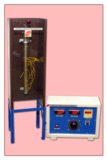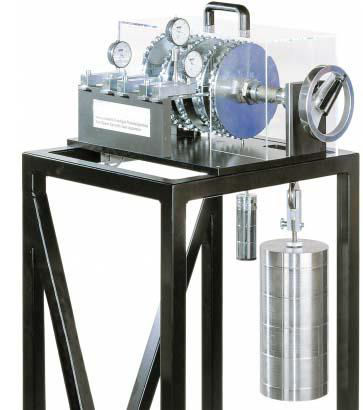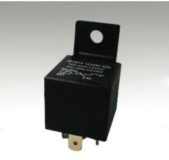Dynamic Behaviour of Multistage Planetary Gears Model MT 037
Home » Products » Dynamic Behaviour of Multistage Planetary Gears Model MT 037
Dynamic Behaviour of Multistage Planetary Gears Model MT 037
Sci-tech Dynamic Behaviour of Multistage Planetary Gears Model MT 037 allows the investigation of the dynamic behavior of a two-stage planetary gear. The trainer consists of two planet gear sets, each with three planet gears. The ring gear of the first stage is coupled to the planet carrier of the second stage. By fixing individual gears, it is possible to configure a total of four different transmission ratios. The gear is accelerated via a cable drum and a variable set of weights. The set of weights is raised via a crank. A ratchet prevents the weight from accidentally escaping. A clamping roller freewheel enables free further rotation after the weight has been released. The weight is caught by a shock absorber. A transparent protective cover prevents accidental contact with the rotating parts.
| Size: | 800cm x 600cm x 800cm (LxWxH) |
| Weight: | 120 kg |
Item Description
Features
- Two-stage planetary gears with three planet gears each
- Four different transmissions can be configured
- Bending beams to measure force
- Inductive speed sensors for speed-time diagrams to determine the angular acceleration
The planetary gear is a special type of gear drive, in which the multiple planet gears revolve around a centrally arranged sun gear. The planet gears are mounted on a planet carrier and engage positively in an internally toothed ring gear. Torque and power are distributed among several planet gears. Sun gear, planet carrier and ring gear may either be driving, driven or fixed. Planetary gears are used in automotive construction and shipbuilding, as well as for stationary use in turbines and general mechanical engineering.
Sci-tech Dynamic Behaviour of Multistage Planetary Gears Model MT 037 allows the investigation of the dynamic behavior of a two-stage planetary gear. The trainer consists of two planet gear sets, each with three planet gears. The ring gear of the first stage is coupled to the planet carrier of the second stage. By fixing individual gears, it is possible to configure a total of four different transmission ratios. The gear is accelerated via a cable drum and a variable set of weights. The set of weights is raised via a crank. A ratchet prevents the weight from accidentally escaping. A clamping roller freewheel enables free further rotation after the weight has been released. The weight is caught by a shock absorber. A transparent protective cover prevents accidental contact with the rotating parts.
To be able to determine the effective torques, the force measurement measures the deflection of bending beams. Inductive speed sensors on all drive gears allow the speeds to be measured. Optionally, measured values can be transmitted directly to a PC via USB. The data acquisition software is optionally included. The angular acceleration can be read from the diagrams. Effective mass moments of inertia are determined by the angular acceleration.
See also different:

Sci-tech Heat Transfer in Natural Convection Apparatus Model TH 005 consists of a vertical brass pipe heated by a cartridge heater inside it.

Sci-tech Basic Satellite Communication Trainer Model TCM 006 is the first of its kind using actual techniques of satellite communication. It can uplink a given signal to a satellite link emulator, which can be stationed far away. The satellite [...]


